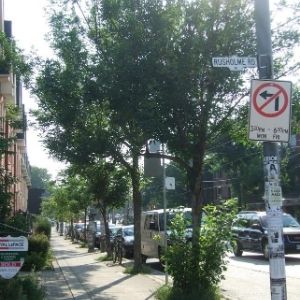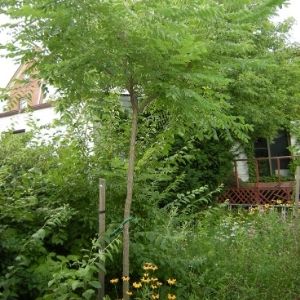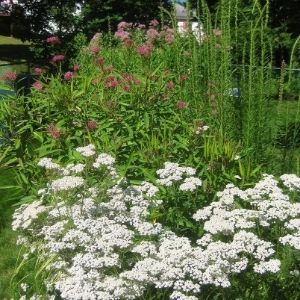
Monocultures (the planting of only one species) can have a damaging effect on biodiversity as they can deplete nutrients in soil, lower wildlife and pollinator diversity and diminish resiliency to external environmental factors, such as storms, pests and diseases. As a local example, consider the over-planting of ash trees. Because many ash trees were planted in close proximity to one another, the urban forest in our city was greatly impacted by the emerald ash borer (EAB), an invasive beetle introduced to Ontario in 2002 that feeds on and kills ash trees. Today, EAB has now wiped out almost an entire population of ash trees across Toronto, nearly 860,000 trees.
Planting a variety of different tree, shrub and perennial species is the best way to ensure a thriving, healthy and resilient ecosystem in your yard and across our city.
Plant native!
In recent years, the spread of invasive plants has threatened native ecosystems. Invasive plants can take over your garden and out-compete native species for resources. This reduction in native plant species can mean a loss of food and habitat for native wildlife, which in turn, can affect wildlife species populations. Planting native species can attract a variety of wildlife, such as songbirds, pollinators and small mammals, by providing them with food, water, shelter and the nesting places they need. Because native species are incredibly important for backyard biodiversity, even planting a few can greatly increase the amount of wildlife in your yard. Additionally, once established, native species typically require less maintenance because they are well-adapted to the climate and soil conditions of their local environment.

Lawns are manicured environments that require a lot of mowing, watering and ongoing maintenance. Establishing a naturalized area in your yard means less overall human input and an increase in biodiversity. Consider planting a native bird or pollinator garden in your yard to help increase wildlife diversity. Planting a variety of native species that bloom at various times can provide these birds and pollinators important habitat and food sources throughout the year. Additionally, species that are different in colour, shape and height help create a layered canopy effect. These different layers develop micro-environments which allow diverse wildlife to thrive. Gardens with a high density of diverse plants are the most attractive to birds and pollinators!
Creating outdoor spaces that provide and foster biodiversity is in our best interest! Biodiversity drives important natural processes that humans depend on and that make our cities more liveable. These processes and services include, but are not limited to the purification of air and water, pollination of plants, food security and protection from exotic pests and diseases.
Want to start planting? We offer a variety of trees, shrubs and perennials to help bring biodiversity to your backyard. Apply to our subsidized Backyard Tree Planting Program to plant native trees on your property for less or plant native shrubs. We also offer Native Garden Kits every spring. For more tips, read our blog “Planning the Backyard of Your Dreams.”
Want to learn more about the connection between the urban forest and urban wildlife and how we can help? Visit our Backyard Biodiversity campaign page and follow us on social media where we share weekly tips, tricks and cool facts!
Natasha Keshavjee is the Residential Planting Programs Operations Supervisor at LEAF.
The #BackyardBiodiversity campaign is a partnership initiative with the Toronto Wildlife Centre and is supported by Ontario Power Generation.
The Backyard Tree Planting Program is supported by the City of Toronto, the Regional Municipality of York, Durham Region, the City of Markham, the Town of Newmarket, the Town of Ajax, the City of Oshawa, the City of Pickering, the Township of Scugog, the Town of Whitby and Ontario Power Generation.
